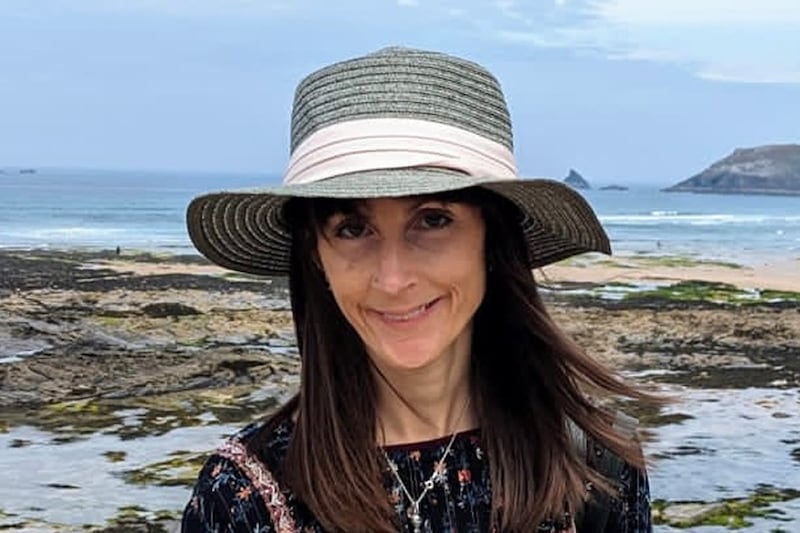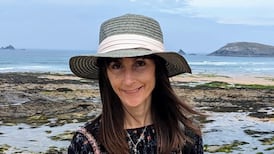The overlooked story of the Belgian Impressionist painter, Marie Howet, and her 55-year devotion to Achill Island is narrated in an attractive monograph. Achill Remembers Marie Howet 1897-1984 (Knockma Publishing, €24) by Mary J Murphy, charts the story of the artist’s arrival in August 1929 at the door of Eva O’Flaherty, the owner of St Colman’s Knitting Industries.
Immediately seized by the island, Howet quickly revelled in the scenery, making lifelong friends during subsequent visits. After arriving in Galway by train, she often enjoyed a Guinness to celebrate her return to Ireland before taking the bus to Achill. Once there, she explored the landscape and was especially drawn to Dooagh, Slievemore and the Deserted Village. Just five years after her first visit, a significant exhibition of her work was held at the Gresham Hotel in Dublin.
Many examples of Howet’s watercolours, oils, sketches and graphite drawings are reproduced alongside photographs of the artist and her niece, Marie Cecile, who travelled to the island with her in 1964. The name of Marie Howet is embedded in letters, memory banks and Achill family history, but this splendidly illustrated celebration marks the 40th anniversary of her death and will bring her important work to a wider audience.
While many country houses are noted for their architecture, decorative art and landscape design, they are also about history and the transmission of ideas. In The Intellectual World of the Country House in Ireland and Britain (Four Courts Press, €49.50) edited by Terence Dooley and Christopher Ridgway, 15 contributors focus on Irish properties such as Adare Manor, Co Limerick, Moore Hall, Mayo, and Monksgrange, Co Wexford, deliberating over aspects of their decoration and libraries.
Writing about Annes Grove, near Castletownroche, Co Cork, Aileen Spitere outlines the 700-volume horticultural library of Richard Arthur Grove Annesley, who in 1928 wrote a gardening book, My Shrubs. His library was an eclectic collection of journals and photographs as well as letters from the English botanist, explorer and plant collector Frank Kingdom Ward, whom he held in high regard, particularly when considering rhododendrons.
It was de rigueur for Ireland’s nobility and gentry to hold extensive libraries in their mansions. But in his essay focusing on the third earl of Roden, James Frazier points out that ownership did not presume reading: “While one owned a library, one did not actually have to open any book.” Other essays include Deirdre Cullen’s discussion of the iconography of the Long Gallery at Castletown House, Co Kildare, and in particular an important pair of large oval paintings dated 1775-6, while Roy Foster considers “Safe and unsafe houses” in relation to architecture, politics and the Irish cultural imagination.
Aspects of book design are explored in Visualizing the Celtic Revival: the Arts and Crafts movement in Ireland – Selected writings by Nicola Gordon Bowe (Four Courts Press, €55) edited by Roisin Kennedy. This sumptuously illustrated volume brings together 16 important essays written between 1989 and 2012 for diverse readers by Bowe (1948-2018) about the Arts and Crafts movement in Ireland. Two of the essays consider the craftsmanship of the book in the movement, and the work of Sir Edward Sullivan, Bart, described as: “A certain Irish lover of well-bound books”.
Bowe’s insightful writing also delves into textiles, furniture and metalwork. She is best known for her monograph on the stained glass artist and illustrator Harry Clarke and for a book on Wilhelmina Geddis. The editor writes that in both these books, Bowe immersed herself in the subject, “awakening for the reader the zeitgeist of their day”. She leaves a deep legacy and her work is invaluable.
Numerous illustrations include colour images of stained glass panels and photographs, Cuala Press prints, a Jack B Yeats pen, ink and watercolour drawing, a Sean Keating portrait of Harry Clarke and embroidered panels by Lolly and Lily Yeats.
A world of hunt balls, garden parties and polo playing unfolds in Beatrix: Dowager Marchioness of Waterford Memoirs 1895-1908, introduced by Marian Ines Dawnay (Somerville Press, €20). A member of the Anglo-Irish aristocracy, Beatrix Waterford was born Lady Beatrix Petty-Fitzmaurice in 1877, and spent part of her childhood in India where her father was viceroy.
Beatrix married Henry Beresford, sixth Marquis of Waterford, lived mainly in Curraghmore and had six children. She set up the first Red Cross War Hospital Supply Depot in Dublin’s Merrion Square, which employed more than 1,500 workers. Maria Dawnay came into possession of the notebooks containing memoirs from her mother-in-law, Lady Katharine Dawnay, a daughter of Beatrix, and has collated them covering 13 years.
Interspersed between the stories are remarkably distinct black-and-white photographs from the 1890s and the following decade. They show early motorcars, wedding celebrations, a donkey carriage, packs of hounds, and the southern Irish Yeomanry escorting King Edward VII and Queen Alexandra through Waterford.
- Paul Clements’s latest book, A Year in the Woods: Montalto through the Seasons, is published by Merrion Press.












